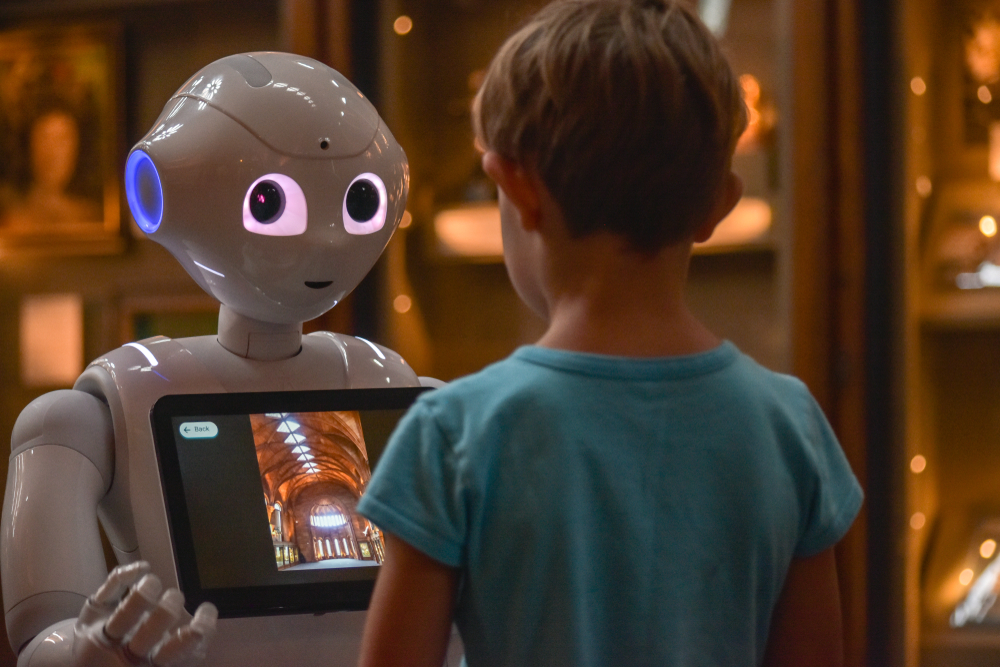Autism spectrum disorder (ASD) affects children as they develop. People with autism have differences in the brain relating to behavior, communication, and learning, as well as how they interact with others.
ASD is marked by difficulty with social situations. Yet, autism exists on a spectrum and affects individuals in varying ways. While some with ASD are nonverbal, others have advanced conversation skills. Some on the spectrum need more extensive daily help and support than others.
New developments in technology could help diagnose children earlier and provide additional support.
How Prevalent Is Autism?
Many lives are touched by autism. According to the Centers for Disease Control and Prevention (CDC), one in 36 children has ASD.
While autism is 3.8 times more prevalent in boys than girls, it affects all children. Girls typically engage in more masking behaviors than boys, making ASD more challenging to identify.
Early Signs of Autism
Children with autism show differences in how they learn and interact with others. Some early indications can include the following:
- avoiding eye contact with caregivers
- not responding to their names
- needing help understanding social situations
- exhibiting repetitive and restrictive behaviors
- engaging in less pretend play
- demonstrating a greater focus on things than people
- having particular interests that focus on a specific topic
- tending to be visual learners
Technological Possibilities for Diagnosing Autism
According to the CDC, parents can receive a reliable diagnosis that their child has autism by age 2. However, many do not get a diagnosis until much later. Early diagnoses can help children with autism. With more information, families can begin providing support, such as therapies.
Several technological advancements are showing potential in earlier autism diagnoses:
-
Artificial intelligence: A Duke University app uses AI to track toddlers’ movements, eye positions, facial expressions, and other behaviors that could indicate autism.
A reliable marker of ASD is that toddlers with autism sway their heads when they sit still. This is nearly invisible to the naked eye, making it difficult for clinicians to see, while the app can identify this.
-
Hair analysis: One diagnostic aid under development uses strands of children’s hair. With an algorithm, the diagnostic aid tests hair for exposure to metals and other substances associated with autism.
-
Hearing tests: A hearing assessment given to infants could detect lags in brainstem responses to sounds that are indicative of autism.
Educational Support for Children With Autism
Additional advancements are providing promising educational support for children with ASD.
-
Socially interactive robots: Specially designed robots can help kids on the spectrum develop communication and social skills. When interacting with robots, they practice having conversations, which may reduce anxiety about socializing with others.
For instance, Orbit, one such robot, teaches children with autism about emotions and social conventions through stories, physical interaction, and visual instruction. The robot reacts to how the user treats it, becoming happy or sad, illustrating the social consequences of actions.
-
Dedicated servers hosting online games for people with autism: Children with autism are often visual learners. Using a tablet or computer to navigate the virtual world can help them express themselves. Autcraft is a Minecraft server for neurodiverse people. The Autcraft creator designed the platform to be an accepting environment where players can grow, learn, and make mistakes while engaging in an online gaming space.
-
Virtual reality: Educators and therapists can use VR technology to create a controlled learning environment for young people on the spectrum. For instance, Floreo has VR lessons to help young people develop social skills and prepare for real-world situations, like crossing the street and selecting a seat in the school lunchroom. (Read a New York Times story about Floreo. Note that a subscription may be required for access.)
Together, such advancements in autism diagnosis and education could provide improved levels of support to those with autism.
Additional Resources
If your child has been diagnosed with autism, contact a special needs planner. Professionals specializing in this area can help you in planning for your child’s future. Find a qualified special needs planning attorney in your area.
Learn more about other resources that may be available to you by consulting each of the following articles and organization websites:
